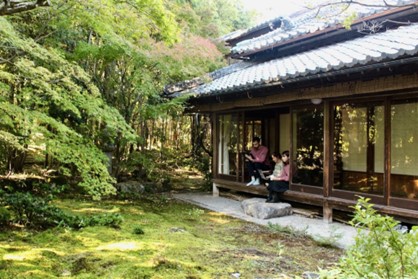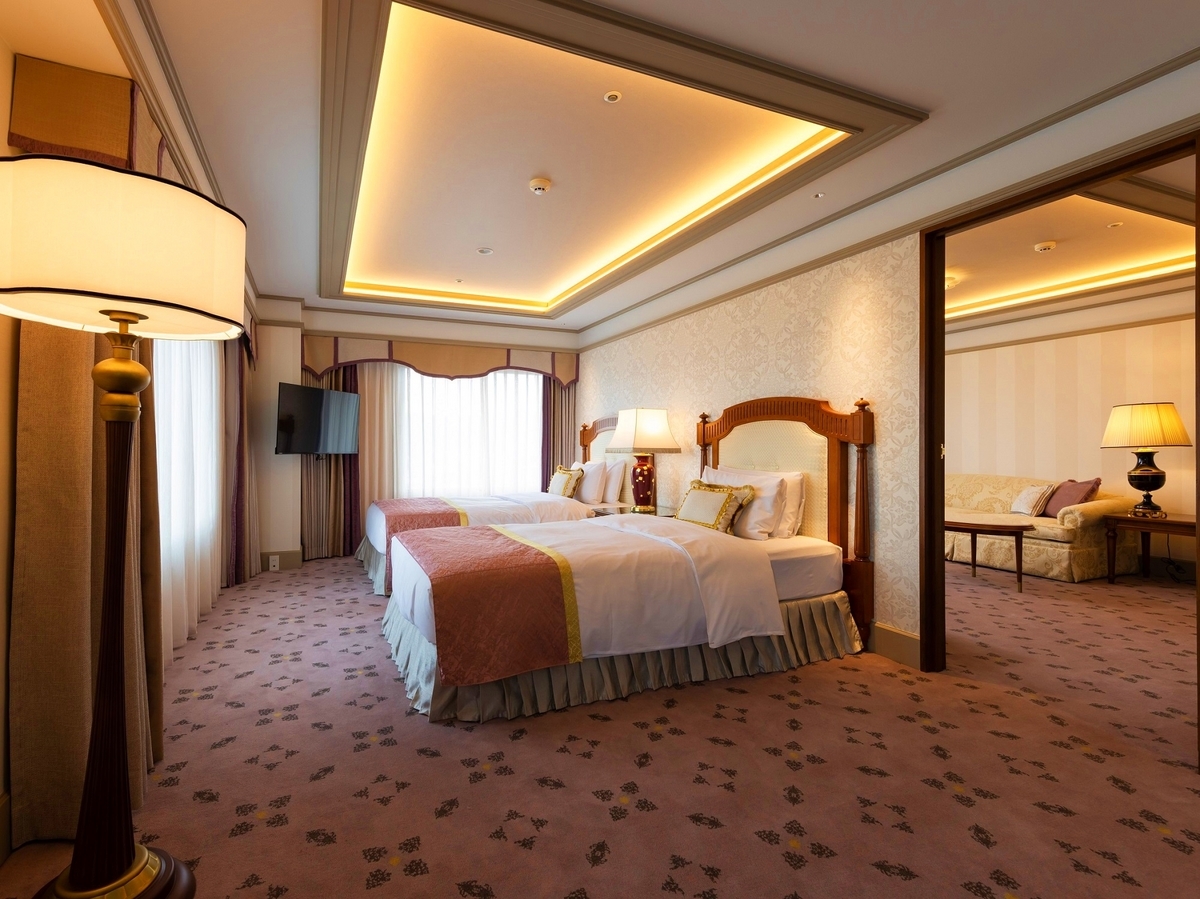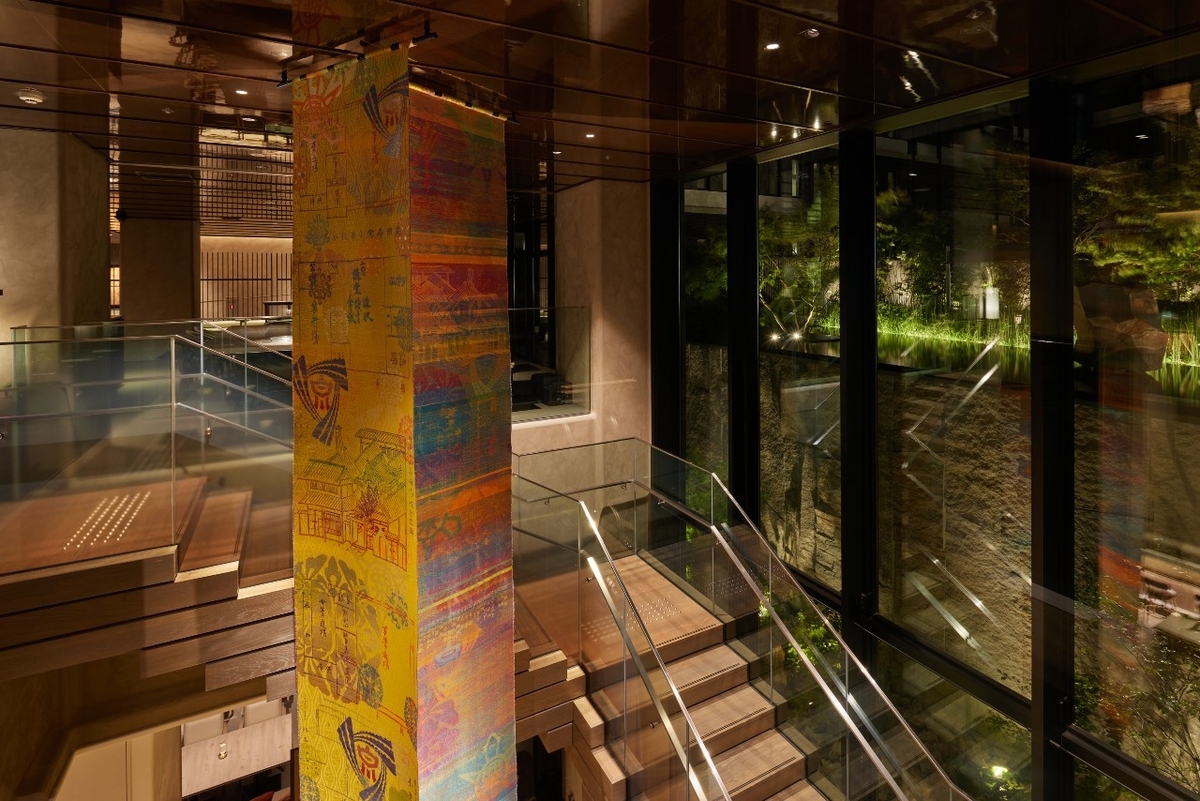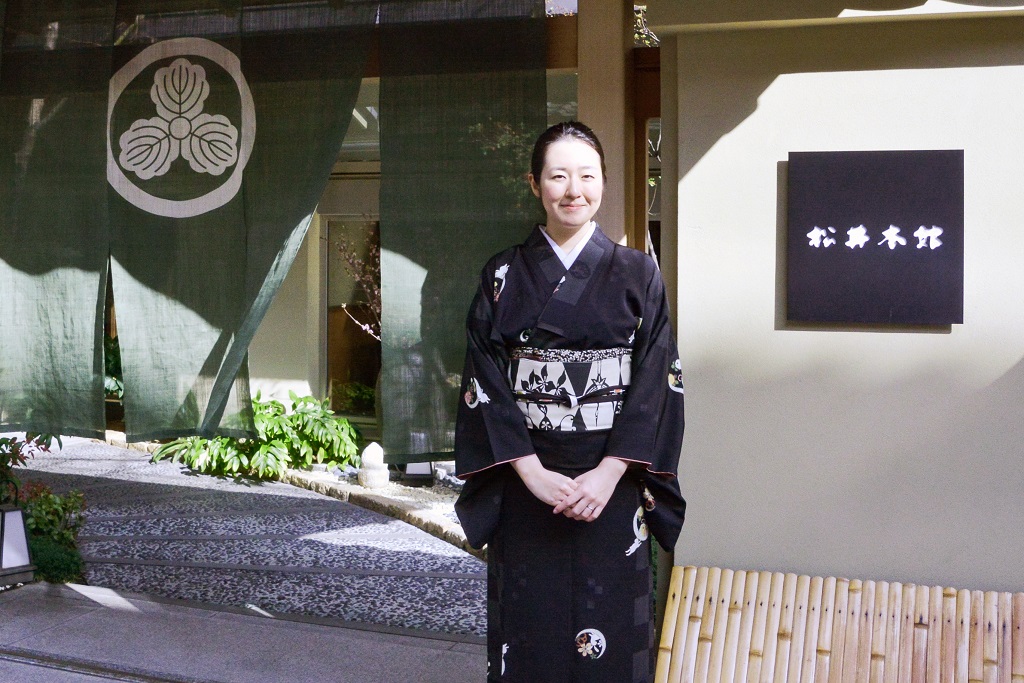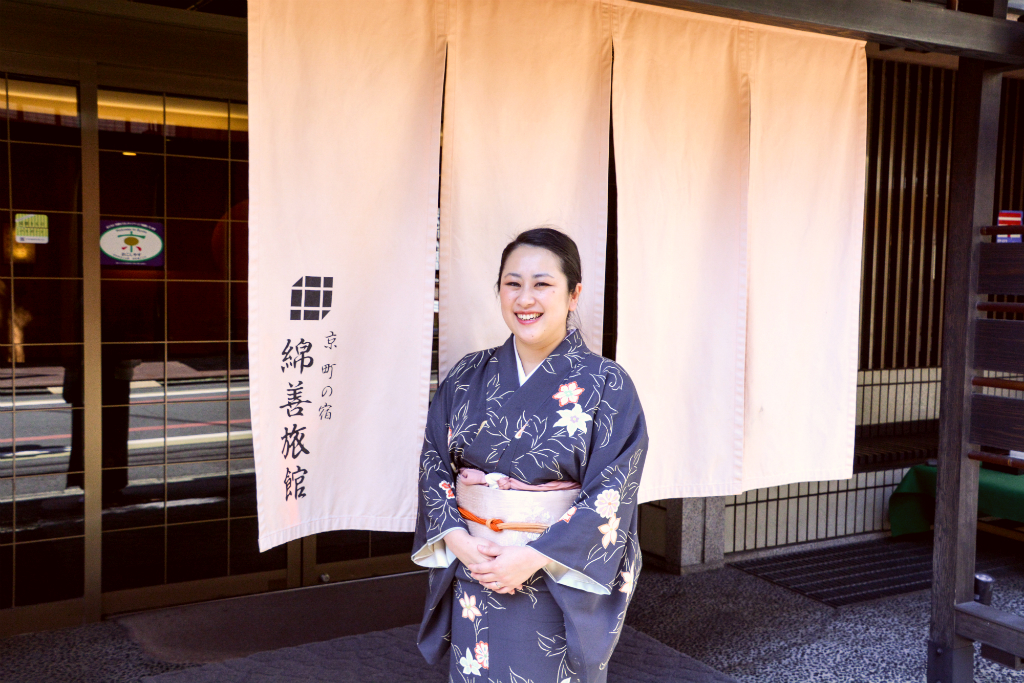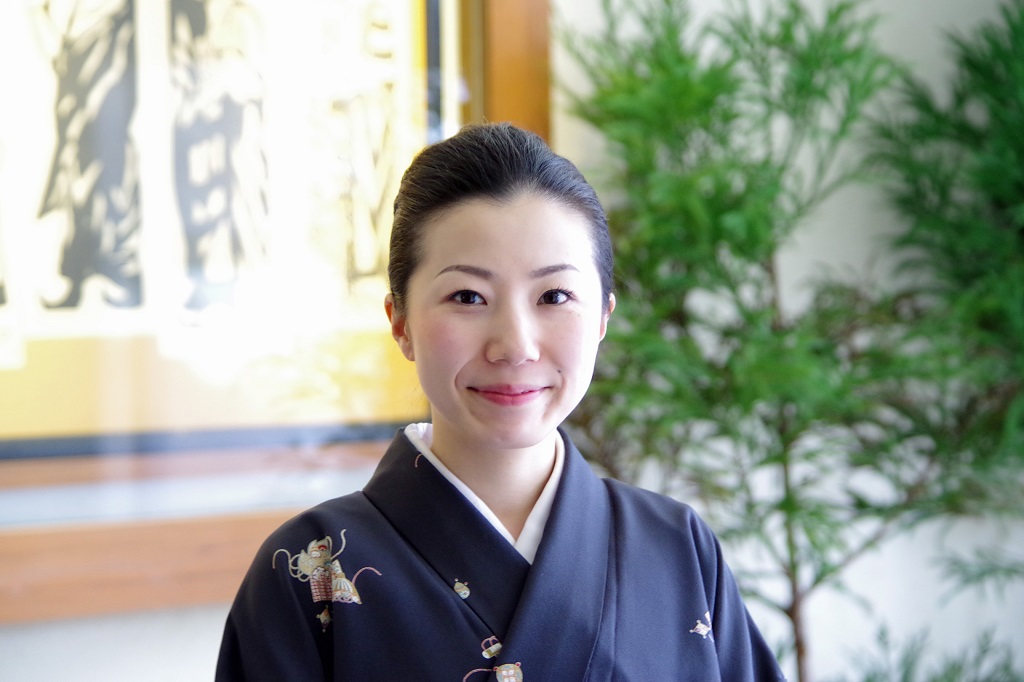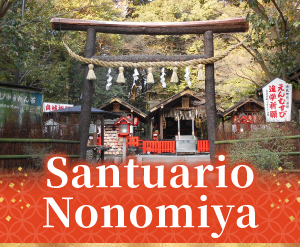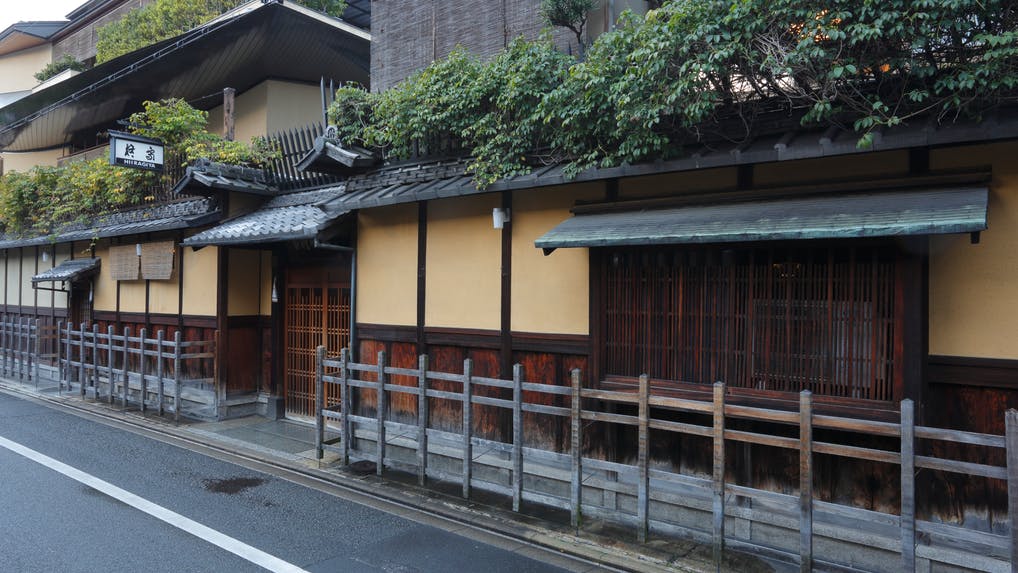
La calle Fuyacho de Kioto se encuentra en pleno corazón de las extensas calles cuadriculadas de la ciudad. Toma la única calle que llega hasta aquí desde un animado distrito comercial y sentirás una atmósfera mucho más tranquila gracias a las antiguas casas comerciales machiya y las antiguas casas kominka tradicionales japonesas que bordean la calle.
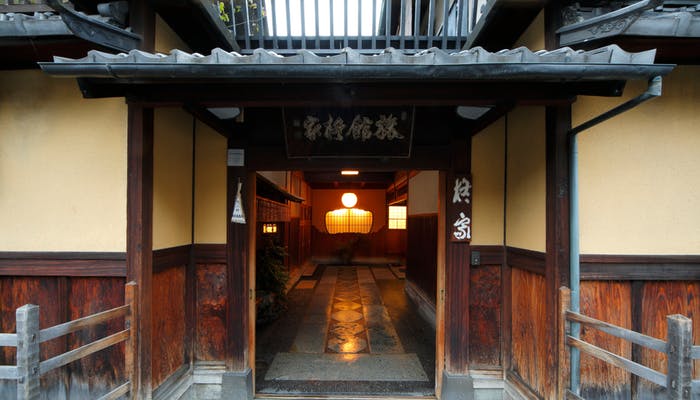
Aquí se encuentra Hiiragiya Ryokan, uno de los ryokan tradicionales más famosos de Kioto. Nada más entrar, se sentirá envuelto en una atmósfera tranquila que le invita a detenerse, descansar y rejuvenecer.
Amada, hospitalidad eterna
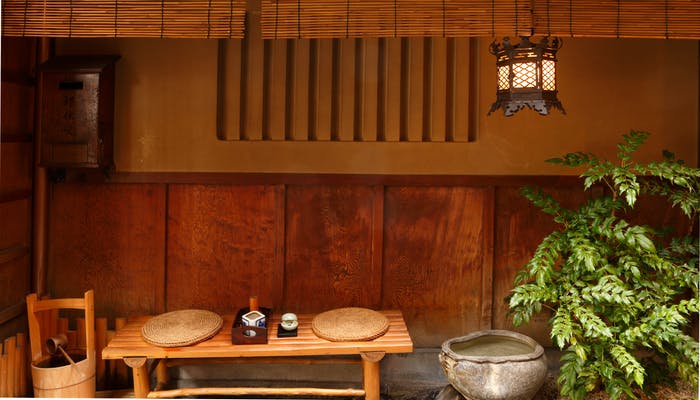
Esta posada se originó en 1818 como una empresa de transporte dedicada a la venta de productos marinos y que también ofrecía alojamiento a los viajeros. Su nombre proviene del Santuario Hiraki-jinja, ubicado en los terrenos del Santuario Shimogamo-jinja (también conocido como Santuario Kamo-mioya-jinja), donde las generaciones pasadas celebraban sus cultos.
Y entre las personas que han continuado visitando este ryokan a lo largo de sus 200 años de historia se encuentran nombres famosos como figuras históricas conocidas de los últimos días del shogunato Tokugawa, así como escritores y artistas destacados.
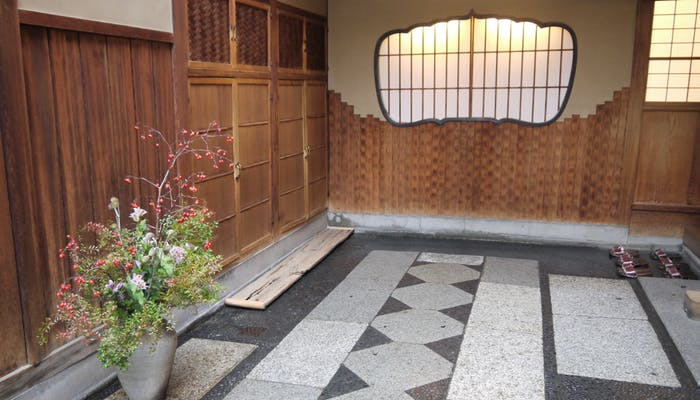
La amplia extensión de pavimento de piedra realmente destaca al cruzar las puertas enrejadas de la entrada. Antiguamente, los rickshaws entraban a la propiedad directamente desde la calle.
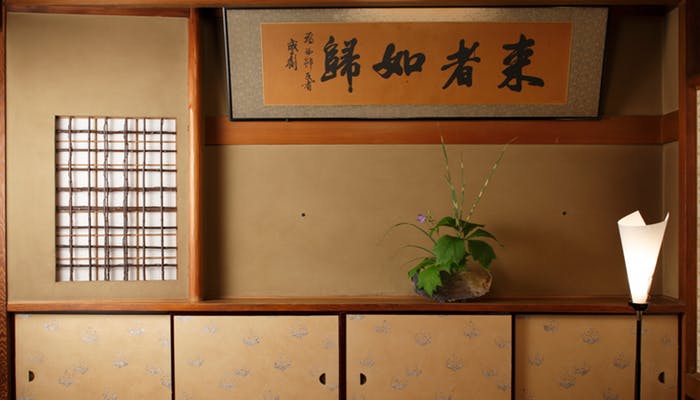
La hospitalidad de este ryokan se centra en la idea de que cada huésped regresa a casa al entrar en la posada. Diríjase al vestíbulo y encontrará un pergamino enmarcado con un mensaje de bienvenida escrito por Shigeno Seisai (también conocido como Shigeno Yasutsugu), un reconocido estudioso de los clásicos chinos de finales del período Edo.
El ambiente de la posada es acogedor, invitándote a relajarte y sentirte como en casa.
Hecho fusionando tradición y conveniencia.

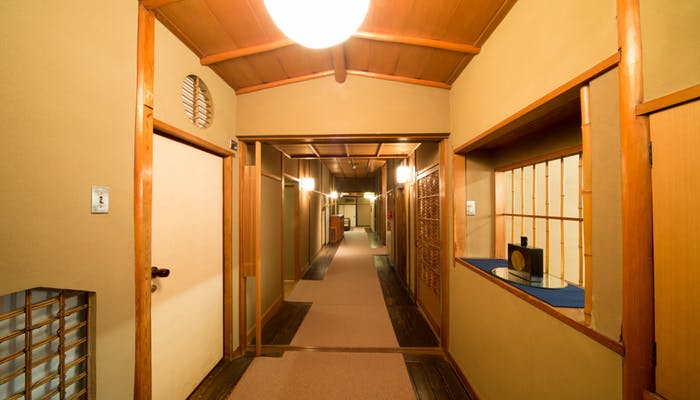
Hiiragiya incluye tanto el edificio histórico más antiguo como un edificio nuevo construido en 2006.
El antiguo edificio es de estilo sukiya-zukuri (casa de té) de finales del periodo Edo. El interior ofrece una rica colección de historia. La artesanía, de una elegancia impresionante y con finos detalles que evocan el estilo de Kioto, se aprecia por doquier. Uno de ellos es el techo, con forma de casco de barco y un centro alto.
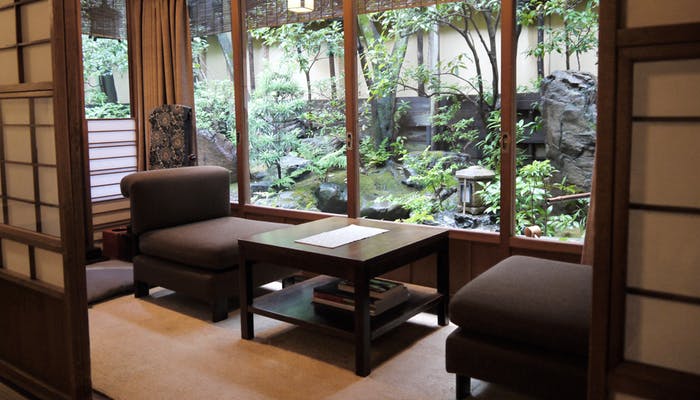
Los huéspedes pueden sentirse cerca de la naturaleza en las habitaciones del primer piso con amplias vistas al jardín.
Se dice que el autor ganador del Premio Nobel Yasunari Kawabata escribió aquí mientras contemplaba esta misma vista panorámica de la naturaleza.
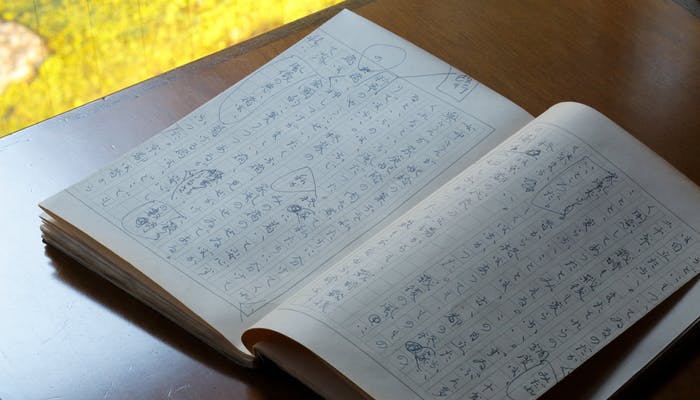
Incluso escribió sobre Hiiragiya, diciendo: «He adquirido la costumbre de escribir en mi habitación en varias posadas, pero ninguna me recuerda tanto como Hiiragiya». Estas palabras también nos permiten comprender que era un huésped frecuente.
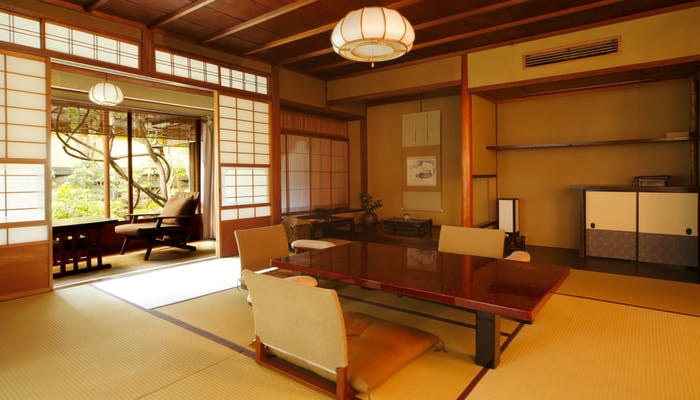
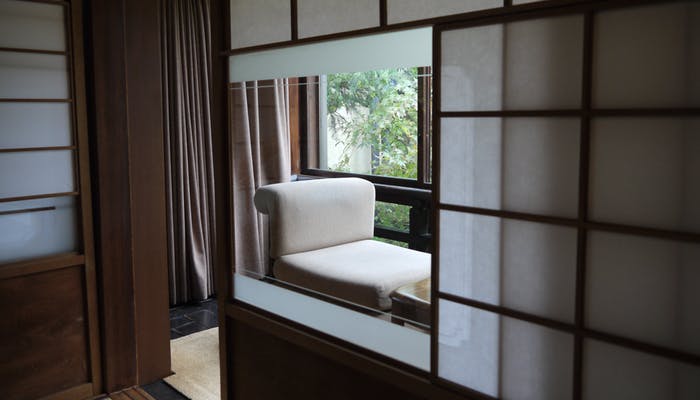
Entre todas las espaciosas habitaciones disponibles, una habitación esquinera en el segundo piso es particularmente especial. Esta habitación está llena de conocimientos transmitidos continuamente desde tiempos pasados sobre cómo vivían las personas.
Con solo un vistazo, los huéspedes notarán varias características exclusivamente japonesas, como la fresca puerta de bambú en verano o la pantalla especial de medio vidrio para ver la nieve del invierno sin salir de la habitación.
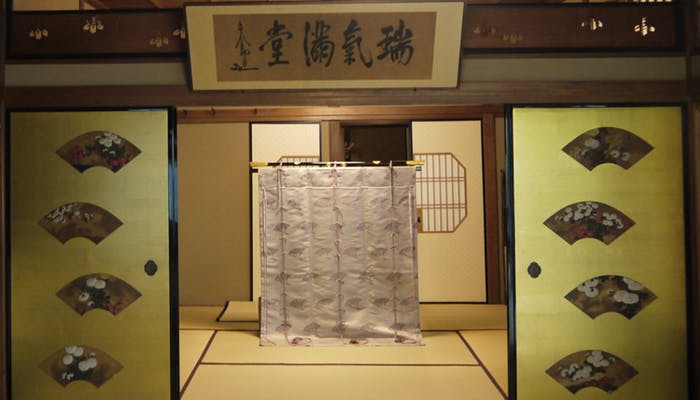

Las magníficas pinturas de biombos corredizos de esta sala merecen una mención especial. Estos biombos, pintados durante el periodo Edo, presentan pinturas tridimensionales con pigmentos blancos hechos de conchas marinas molidas y similares. Las pinturas han sido sometidas a repetidas restauraciones, técnicas que han devuelto estos preciados objetos a la actualidad.
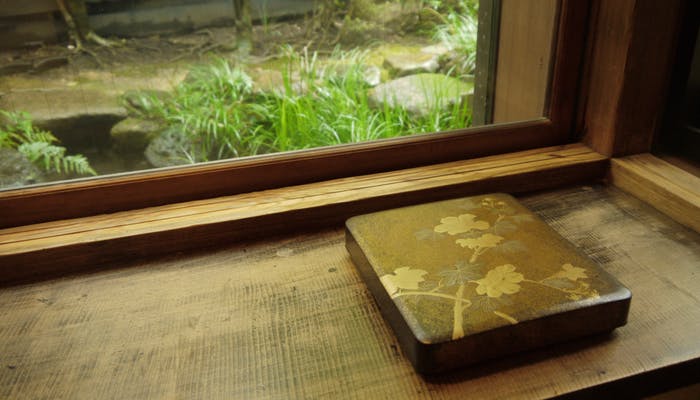
En el escritorio del estudio hay un estuche con pinceles y un tintero. Si intentas sentarte ahí y escribir una pincelada, te sentirás relajado y a gusto.
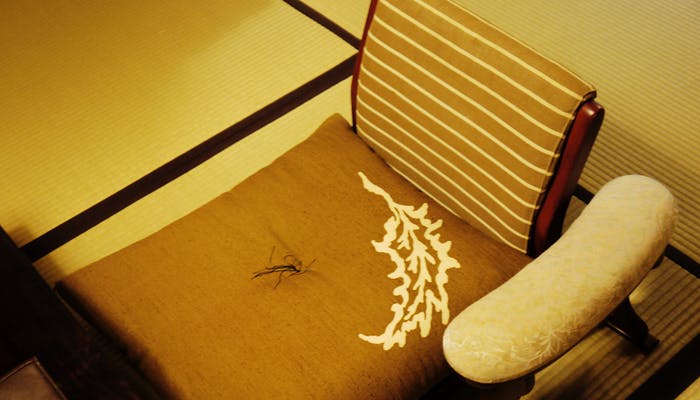
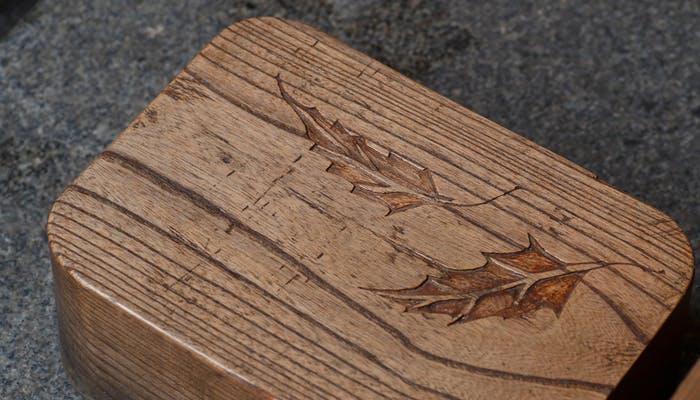
Todo en Hiiragiya (la alfombra, los cojines de los asientos, el escalón de la entrada donde los invitados se suben mientras se quitan los zapatos) está decorado con un motivo de acebo (hiiragi).
Buscarlos mientras paseas por el hotel es otro placer.
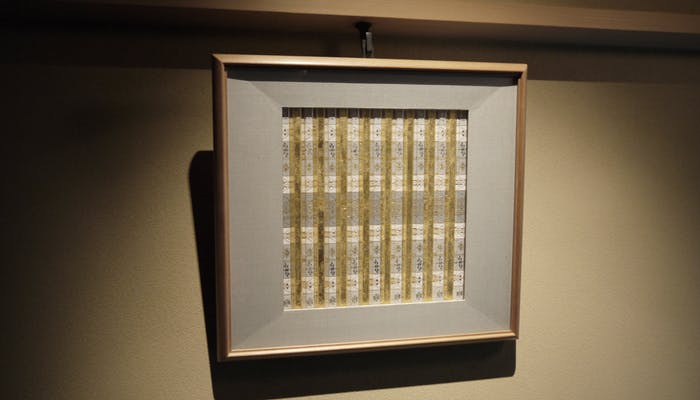
Mientras que el edificio antiguo presenta el brillo sutil y cálido de la madera, el nuevo edificio se distingue por su atmósfera luminosa.
Los pergaminos y caligrafías colgantes en las habitaciones y pasillos, un homenaje a la conexión entre varios artistas y esta posada, son piezas únicas que sólo se pueden encontrar aquí.
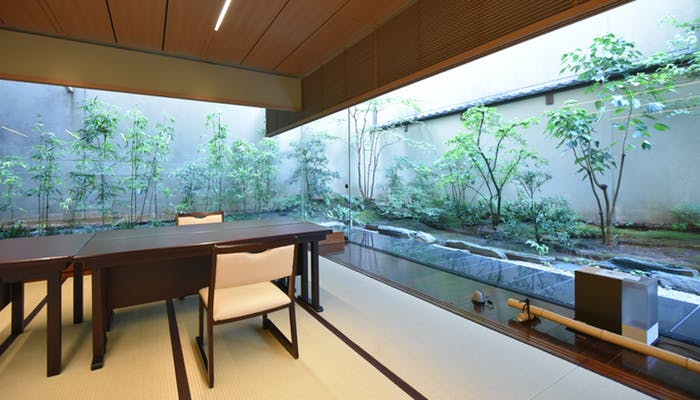
El gran salón donde los huéspedes pueden cenar y tomar té tiene un ambiente confortable con la luz del sol filtrándose entre los árboles y entrando por las amplias ventanas.
También se decora según la temporada, como por ejemplo con decoraciones de Año Nuevo en enero y muñecas hina en marzo para el festival de muñecas Hinamatsuri.
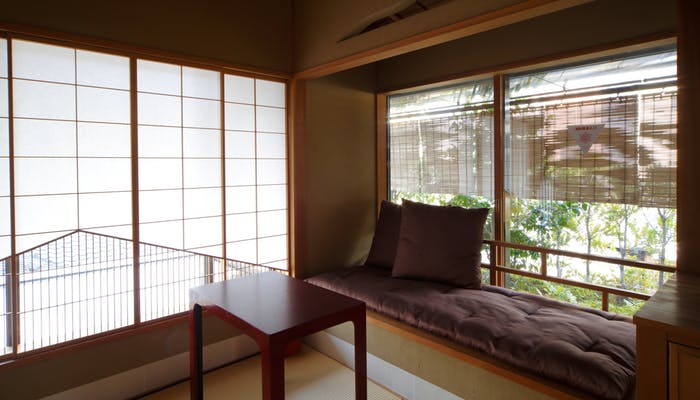
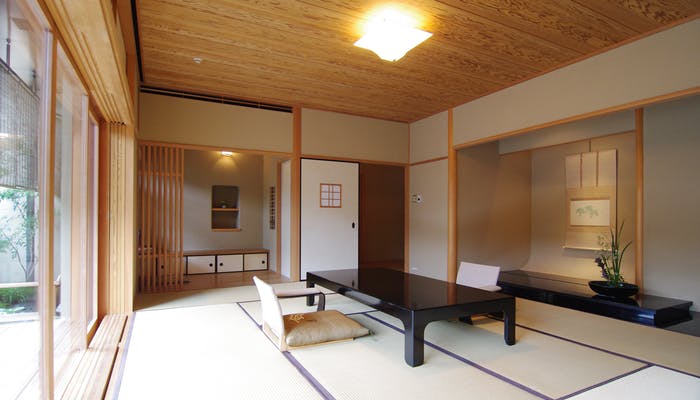
Hay siete habitaciones que ofrecen instalaciones modernas y confort, incluidas camas en lugar de colchones futón japoneses.
Todo en estas luminosas habitaciones, como el jardín del patio y el macetero de flores, tiene un distintivo toque japonés.
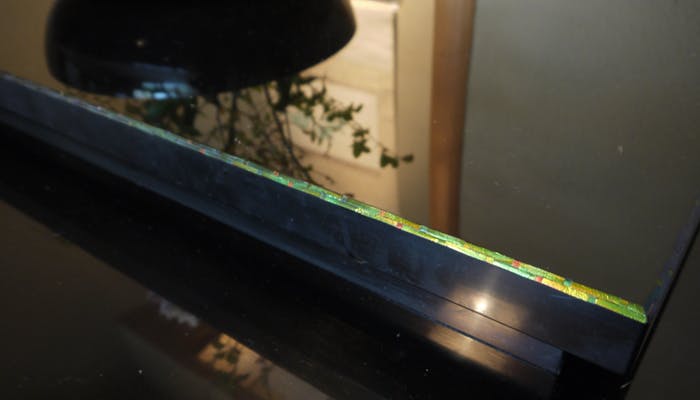
La habitación de lujo en el nuevo ala está llena de diseño tradicional.
Los bordes del nicho decorativo lacado (tokonoma) presentan alas de escarabajo joya, para un contraste encantador que los invitados apreciarán.
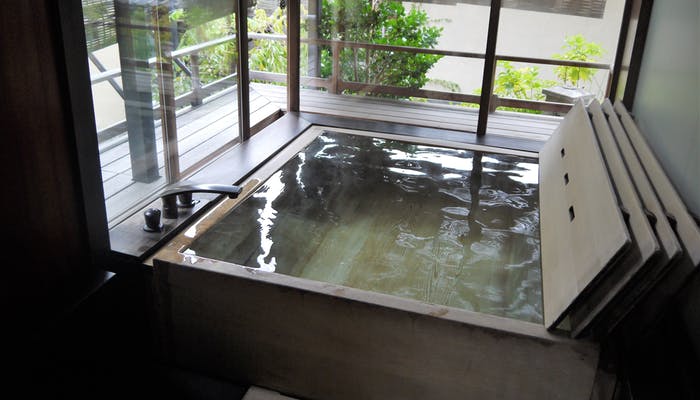
La posada cuenta con un manantial y un baño de cipreses donde los huéspedes pueden disfrutar del baño. No son aguas termales, pero su rico aroma alivia suavemente el cuerpo.
Ya sea que elija el edificio antiguo con su arquitectura histórica y decoración tradicional de antaño o las comodidades modernas del nuevo, los huéspedes disfrutarán de una estancia con la reconocida trayectoria de hospitalidad de la posada, apreciada por sucesivas generaciones de figuras prominentes. Visítenos y elija una habitación con el estilo que desee.
Disfrute de las estaciones de Kioto con cocina kaiseki al estilo de Kioto elaborada con esmero.
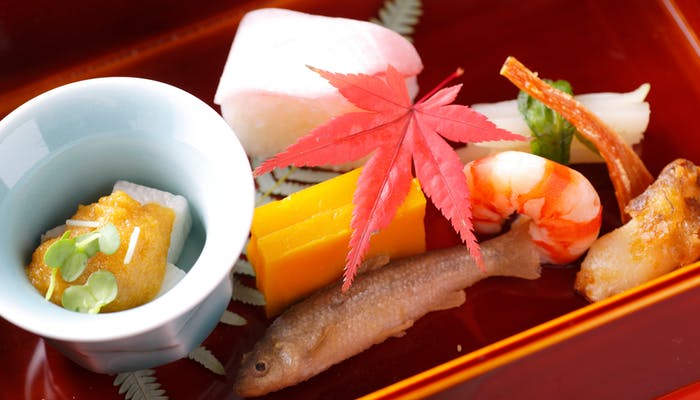
Las calles de Kioto están repletas de restaurantes japoneses tradicionales y de larga trayectoria. Pero a pesar de la gran variedad de opciones, los visitantes hambrientos nunca dejan de acudir a Hiiragiya.
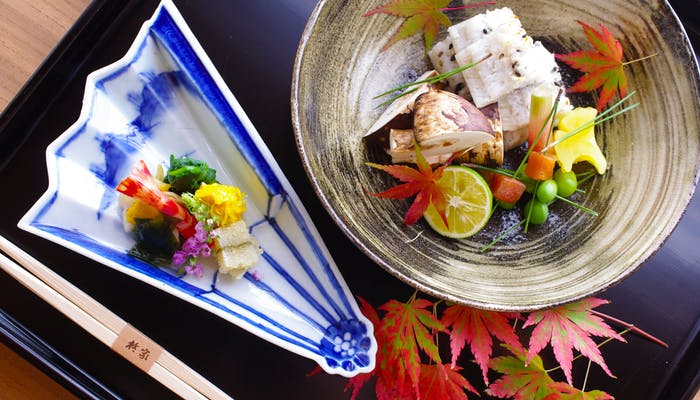
El Kyo-kaiseki (cocina tradicional y sofisticada de Kioto) en Hiiragiya combina ingredientes de todo Japón con verduras frescas cultivadas en Kioto. Los diversos platos, elaborados con ingredientes selectos, son reconocidos por su sabor y nutrición.
Los coloridos platos de cerámica, incluyendo la cerámica Kiyomizu, también incluyen piezas con una larga historia. Incluso hay platos que podrían considerarse antigüedades.
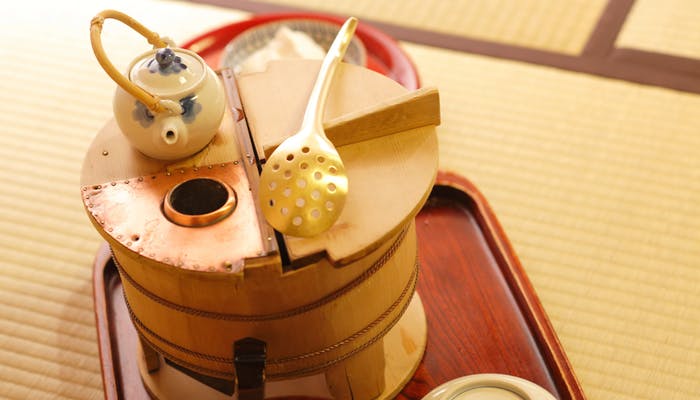
Para desayunar, esta posada ofrece su yudofu (tofu hervido) de autor. El plato que lo sirve fue elaborado por el tesoro nacional viviente Kiyotsugu Nakagawa.

Hirano Tofu es una tienda en la calle Fuyamachi. El tofu de aquí ha sido uno de los favoritos de varias figuras famosas: primero el artista Rosanjin Kitaoji y, más tarde, el burócrata y empresario Jirō Shirasu.
Transmitido de generación en generación, el aroma y el sabor de este tofu de alta calidad llenarán tu boca y despertarán suavemente tu cuerpo a primera hora de la mañana.
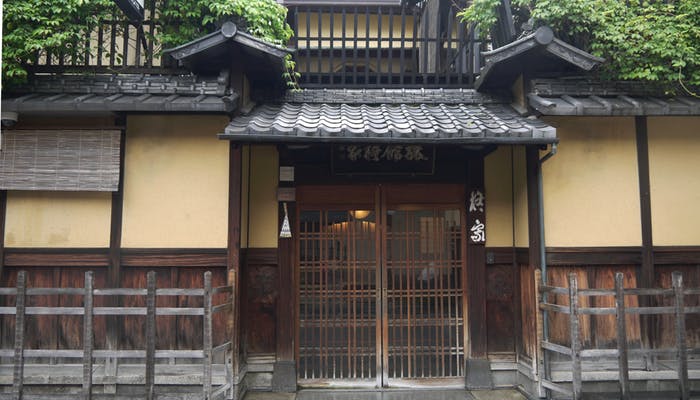
Hiiragiya Ryokan, con su valioso edificio histórico, está profundamente arraigado en la idea de aprender del pasado y conectar con el futuro. Esto explica la esencia de su hospitalidad, transmitida durante más de 200 años, que invita a los huéspedes a "volver a casa" en su próxima visita.
Direcciones
Nakahakusancho Agaru Aneyakoji Sasayacho, Nakagyo-ku, ciudad de Kioto, prefectura de Kioto 604-8094
Teléfono
+81-75-221-1136
Sitio web
https://www.hiiragiya.co.jp/en/

